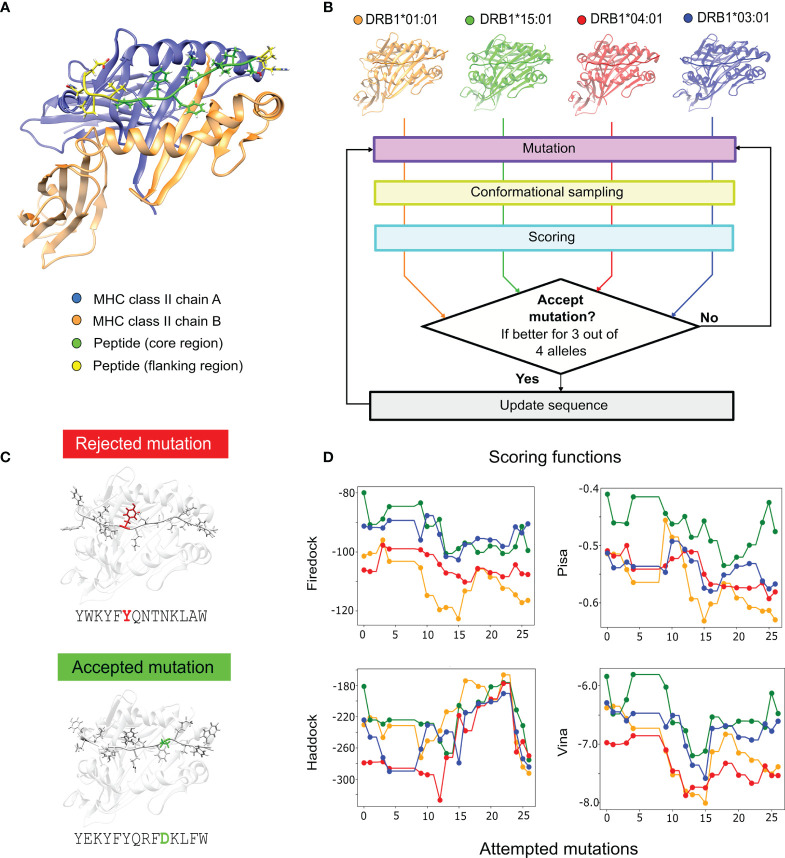Figure 1.
Multiple-allele epitope engineering protocol. (A) MHC II receptor bound to a peptide, with chain α represented in blue, chain β in orange, the peptide core region in green and the peptide flanking regions in yellow. (B) PanMHC-PARCE workflow for epitope optimization toward multiple alleles (DRB1*01:01 in orange, DRB1*15:01 in green, DRB1*04:01 in red and DRB1*03:01 in blue). First, the starting protein-peptide complexes are modelled. Then, a Monte Carlo algorithm is performed. At each step, a single-point mutation on the peptide is attempted. Then, parallel simulations of the mutated peptide with each allele are sampled with MD. The trajectory snapshots, for each allele, are scored with multiple scoring functions, and a consensus criterion is applied. The mutation is accepted if the scoring consensus is favorable for three out of the four alleles. (C) An example of a rejected mutation during the design is colored in red, and an accepted mutation colored in green. (D) Example of the evolution of the scoring results for the multiple-allele engineering of the P. vivax epitope for Firedock, Pisa, Haddock and Vina (see the Methods). The dots in the curves represent the mutations that are accepted and the colors of the different MHC alleles are based on panel (B).

